Cambiar idioma :

Cables de motor para cadenas portacables
Un motor se alimenta de energía a través de un cable de motor que contiene conductores: tres conductores negros para las fases L1, L2 y L3 y un conductor verde/amarillo para la tierra. En la actualidad, los bobinados del motor suelen estar interconectados formando una estrella o un triángulo. De este modo, el número de núcleos se limita a cuatro. Se puede elegir un cable con o sin apantallamiento, en función de los requisitos del cable con respecto a las interferencias o la sensibilidad del entorno. Y, por supuesto, el cable se fabrica con diversas calidades de revestimiento y clases mecánicas.
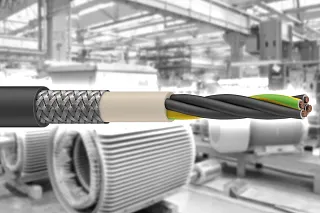
Why motor cables?
When professionals talk about motor power, they usually don't just mean a supply cable for a motor. A four-core control cable can also represent this. The point is that you want to connect the motor to a frequency converter (FI). The prerequisite for this is that the insulation of the core fulfils the voltage level of 600/1000V. This is necessary because the frequency converter uses the principle of pulse width modulation to regulate the frequency and therefore the motor speed. This leads to voltage peaks, which the insulation must be able to withstand. For this reason, a higher voltage class is selected than that of a control cable.
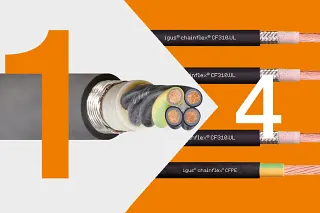
Multi-core vs. single core
For large drives in particular, it is now common to run the cable in single cores. This solution offers several advantages over the classic four-wire multi-core. The biggest advantage is probably the significantly lower price, which is achieved through a different, cost-effective manufacturing process. The single-core solution is also robust and therefore suitable for small installation spaces in the energy chain, while at the same time offering a longer service life. This is particularly noticeable on long travels. The connection to the motor is easier with the thinner single-core cables, but requires a special screw connection. We are very experienced with challenges of this kind and therefore always have the required products for the solution in stock.
Advantage of TPE for abrasion, cold and service life
The majority of our motor cables have the high-end material TPE as the outer jacket material. This material is particularly suitable for applications in extreme temperature ranges. This is because the temperature range for TPE motor cables is defined in energy chain as -35°C to +90°C. This means that applications in deep-freeze areas or applications in very warm environments are just right for this material. In addition, TPE has another special feature - maximum abrasion resistance. In direct comparison to PVC & PUR, TPE has better abrasion behaviour and is therefore ideal for high-end applications for the highest service life.
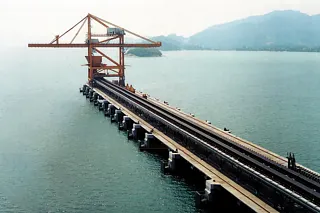
Motor cables in crane systems
igus has been equipping crane systems with energy chains for many years. Well over 10,000 crane systems are in long-term use worldwide. The cable and chain withstand the most adverse conditions, from -40°C in the Siberian winter to 50°C in the harbour of Dubai. A cable failure is unimaginable in crane and trolley operations. Maximum reliability is required in these areas. This is why, for example, single cores from the CF330.D or CF340 series are used throughout to supply the hoist with nominal conductor cross-sections of up to 185mm. This can be seen as a development towards standardisation. The next time we plan an application with a large cross section, we should definitely discuss a concept with single cores that have a high-quality braided conductor.
¿Aún no ha encontrado el cable adecuado?
¿Conoce ya nuestra herramienta online?
Encuentre fácilmente el cable adecuado, calcule su vida útil y solicítelo online.

Buscador de productos
Encuentre rápidamente el cable adecuado.
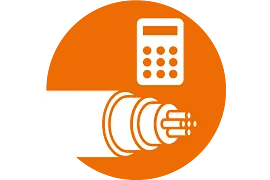
Calculador de vida útil
Calcule la vida útil de cualquier cable chainflex.

Calculador del recargo del cobre
Calcule el recargo diario del cobre.

Configurador de cables especiales
Configure su cable personalizado en solo 3 minutos.
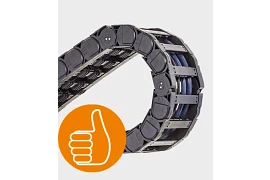
¿Busca una cadena portacables para su cable?
Ver cadenas portacables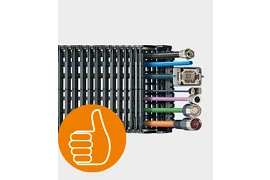
... or everything ready harnessed as a readychain?
Ver sistemas readychainConsultas
Estaré encantado de responder a sus preguntas personalmente
Vendortec Chile+56 - 22 710 58 25Escribir un correo electrónico
Consultas y envíos
En persona:
De lunes a viernes de 8:00 a 18:00h
Online:
24h